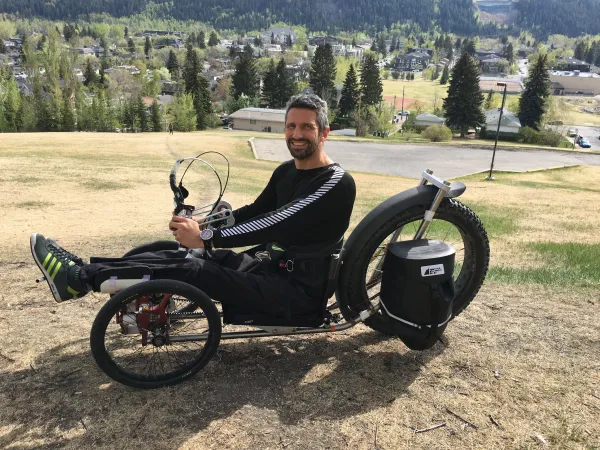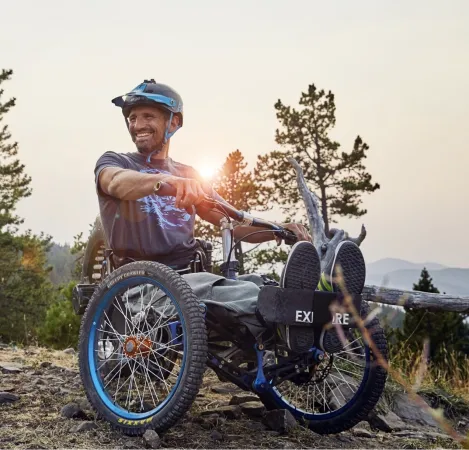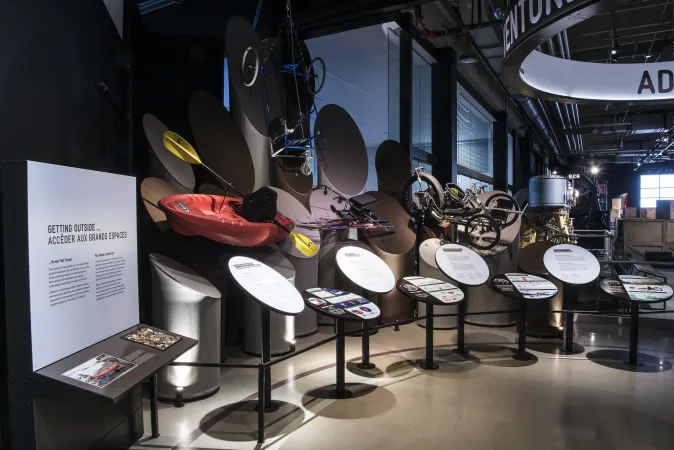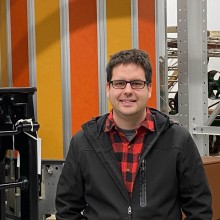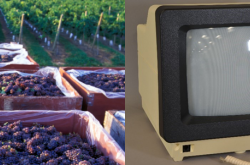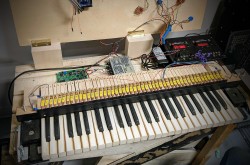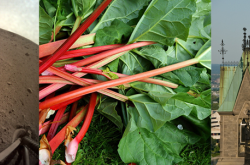Christian Bagg and the Icon Explore
For Canada History Week 2018 - A short blog post highlighting Christian Bagg’s creativity and innovation, which helped him develop the Icon Explore adaptive off-road vehicle.
An avid outdoors person from Calgary, Alberta, Christian Bagg was a semi-professional mountain biker and snowboarder. After injuring himself in a snowboarding competition, Christian became interested in adapted sports and technology. As existing technology tended to limit his ability and comfort, Christian started using his machinist skills to design and fabricate custom technology adapted to his needs. Rather than adapting to the wheelchair, Christian decided to adapt the wheelchair to him.
Christian Bagg donated this Icon Explore prototype to the Canada Science and Technology Museum in 2016.
Christian’s love for nature and the mountains soon had him thinking about ways to access the backcountry bicycle and hiking trails he missed so much. Over five years of experimentation and hard work, he developed the Icon Explore, an adaptive off-road vehicle designed to travel over rough and sloping terrain. Built around an innovative and high-tech articulating frame, with a suspension and levelling mechanism that allows the rider to stay upright in rough backcountry environments, the Explore is a three wheeled vehicle that is independently propelled and controlled, allowing the user to explore nature on their own terms.

By developing the Icon Explore, Christian was able to join his family on backcountry hikes in National Parks.
While initially focused on designing himself a “cool mountain bike”, Christian’s project expanded after an unexpected encounter. While testing an early prototype, Christian was asked by Lindsay Frilotte, a young girl living with a rare mitochondrial disorder, to borrow his vehicle for a ride. Upon seeing Lindsey’s enthusiastic reaction, having described her experience as “the best day of my life”, Christian realized he could develop his tricycle to help other people with disabilities access the outdoors. He then started testing different versions and adaptations, each designed to suit the different needs of riders while giving them as much control as possible over their experience. The rider’s experience was the key part of the project, with Christian developing his innovative and high performance technology in order for the rider to experience, and enjoy, the sights, the sounds and the smells found in Canada’s great outdoors.
“From a child with cerebral palsy to an able-bodied 30-year-old, everyone has the same grin on their face while driving it. The sense of freedom is equal.”
- Christian Bagg
The addition of a battery pack and electric motor proved to be a milestone, as it revolutionized the vehicle’s mobility and drastically increased riders’ options and their social inclusion among fellow mountain bike enthusiasts. Indeed, the battery powered Explore not only made it possible for more people to use the vehicle, but also for them to travel farther and faster. By using this version, Christian was able to go cycling with his father and friends, keeping pace even on challenging terrain, something he had been working towards for 22 years. The battery pack and electric motor not only made it possible for Christian to simply enjoy the ride, but also to take his young son out for a bike ride and challenge his friends to keep up with him for a change!
A hand-cranked prototype of the Icon Explore is featured in the Into the Great Outdoors exhibition at the Canada Science and Technology Museum. It is part of an exhibit exploring the accessibility of the Great Canadian Outdoors and the challenges that people with disabilities often have to face in order to fully participate and experience the outdoors. The Icon Explore stands as an example of the creativity, resourcefulness and the innovation put forward by people with disabilities who want access to outdoor adventure. However, as not everyone as the skills and means to design their own technology, it also represents the challenges and barriers faced by people with disabilities who want to participate in outdoor activities.
Acknowledgements:
I would like to acknowledge Christian Bagg for his dedication to adapted sports and technology. His passion for the outdoors and increasing their accessibility is unmatched. I would also like to acknowledge and thank Gabrielle Trépanier for her leadership and dedication to accessibility, which has helped the Canada Science and Technology Museum become more inclusive and representative organization.



